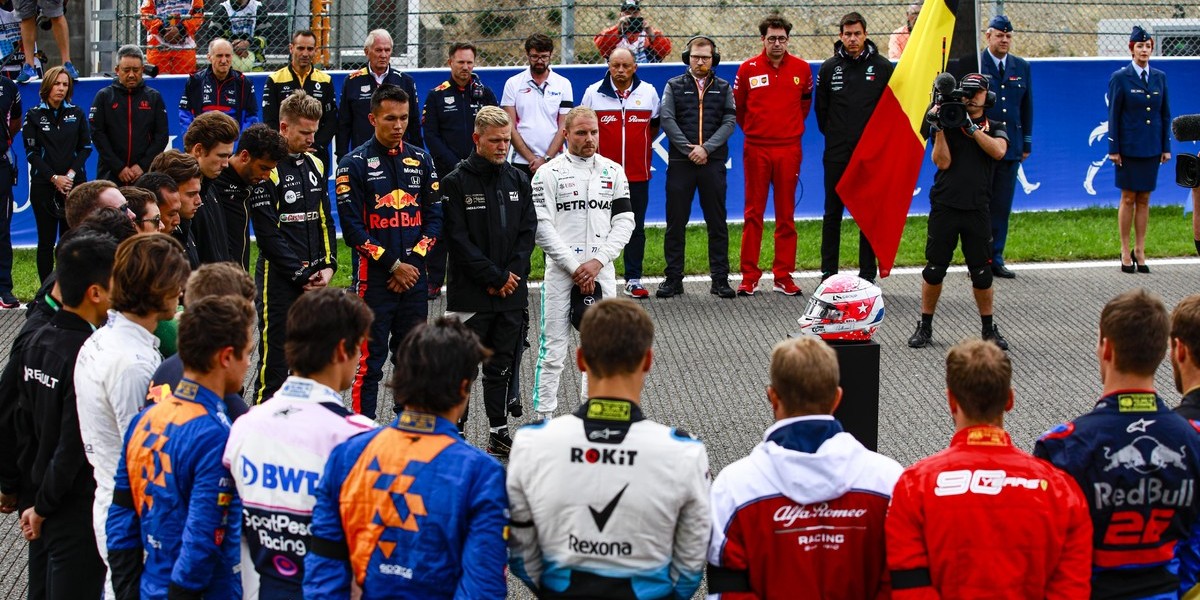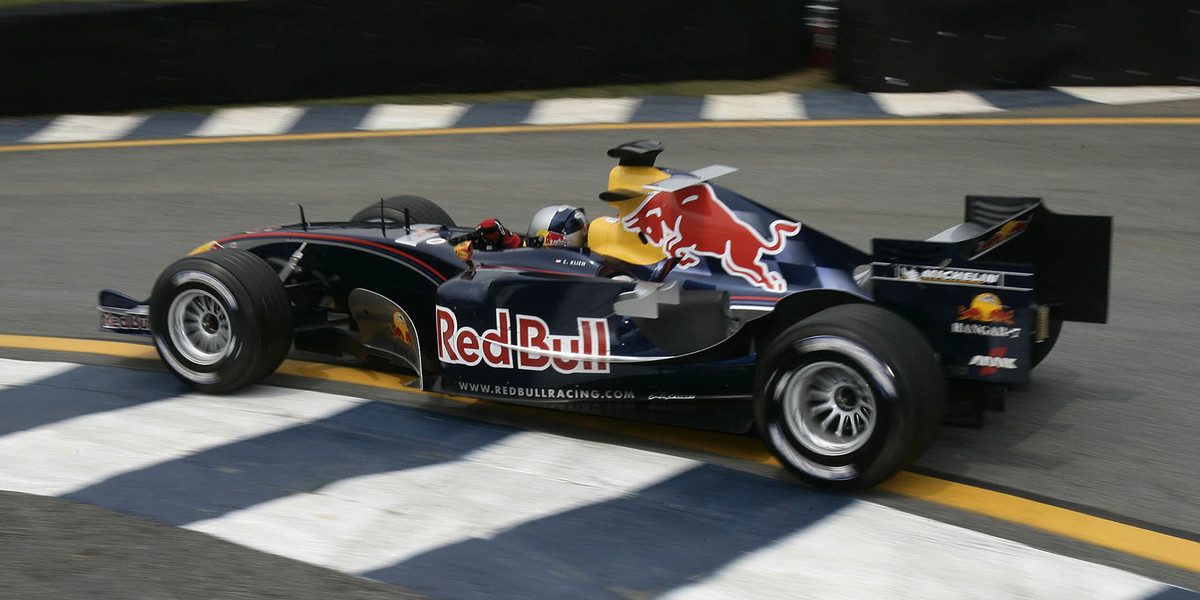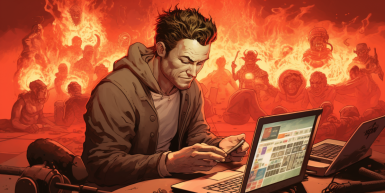Zpráva FIA k havárii Anthoina Huberta – plné znění
Při velké havárii během závodu formule 2 v rámci Velké ceny Belgie 2019 zemřel francouzský pilot Anthoine Hubert a těžce se zranil Američan Juan Manuel Correa. Mezinárodní automobilová federace v pátek 7. února 2020 vydala oficiální zprávu k vyšetřování havárie. Přinášíme její plné znění v českém jazyce, níže je původní anglický text prohlášení.
Úřad Mezinárodní automobilové federace pro bezpečnost dokončil šetření havárie během závodu formule 2 ve Spa-Francorchamps 31. srpna 2019, ve které smrtelná zranění utrpěl francouzský pilot Anthoine Hubert a Juan Manuel Correa ze Spojených států amerických byl vážně zraněn.
Součástí šetření byly rozhovory se zúčastněnými, inspekce fyzických důkazů, analýza dostupných video záběrů, stejně jako analýza dat ze systémů Data Logger a Accident Data Recorder samotných týmů. Vyšetřování bylo ověřováno Pracovní skupinou FIA pro vývoj pod vedením profesora Gérarda Saillanta. Závěry byly odsouhlaseny komisí FIA pro bezpečnost pod vedením Sira Patricka Heada a prezentovány Světové radě motorsportu.
Vyšetřování se soustředilo na čtyři vozy zapojené do havárie, pilotované Anthoinem Hubertem #19, Juanem Manuelem Correou #12, Francouzem Giulianem Alesim #20 a Švýcarem Ralphem Boschungem #21.
Během úvodního kola závodu byly signalizované žluté vlajky v zatáčkách č. 12 a 13 (Fagnes) kvůli nesouvisející události s pomalu jedoucí vozem. Lídr závodu vjel do druhého kola, přičemž první sektor dráhy byl v režimu zelené vlajky.
Sekvence událostí havárie trvající 14,6 sekundy byla zahájena ve druhém kole, když Giuliano Alesi ztratil kontrolu nad svým vozem na výjezdu ze zatáčky č. 3 (Eau Rouge), dostal smyk a opustil trať směrem vlevo, kde narazil do bariéry 1,9 sekundy po ztrátě kontroly nad vozem, a vrátil se na trať ze zatáčkou č. 4 (Raidillon). Vyšetřování upozornilo na důvodnou možnost, že pokles tlaku zadní pravé pneumatiky přispěla ke ztrátě Giuliana Alesiho nad vozem.
Po nárazu auta Giuliana Alesiho do bariéry se na trať dostaly trosky z poškozených částí auta. Aby se Giulianu Alesimu a troskám vyhnul, Ralph Boschung a po něm Anthoine Hubert vyjeli vpravo mimo trať do únikové zóny zatáčky č. 4. Tato reakce pilotů Ralpha Boschunga a Anthoina Huberta na havárii vozu #20 byla zahájena před tím, než byl iniciován signál žlutou vlajkou, s ohledem na jejich těsné rozestupy v době nehody. Žlutá vlajka byla signalizována na maršálovském postu č. 5 (v zatáčce č. 4) 1,8 sekundy po nárazu formule Giuliana Alesiho do bariér.
Během manévru Ralph Boschung zpomalil intenzivněji než Anthoine Hubert, který s cílem zabránit kolizi vyjel ještě více vpravo. Navzdory tomuto manévru Anthoine Hubert absolvoval kontakt se zadní části vozu Ralpha Boschunga, po kterém přišel o přední křídlo a zapříčinil defekt zadní pravé pneumatiky na voze Ralpha Boschunga.
Bez předního křídla a v rychlosti 262 km/h ztratil Anthoine Hubert kontrolu nad vozem a byl vyslán po trajektorii směrující k bariérám na pravé straně zatáčky č. 4 za únikovou zónou, do které narazil pod úhlem přibližně 40 stupňů v rychlosti 216 km/h, což mělo za následek vrcholnému hodnotu přetížení ekvivalentní 33,7 G.
Po nárazu a poté, co bariéra absorbovala část energie, auto odrazila a to pokračovalo ve směru jízdy, zatímco se točilo kolem své osy tak, že svou levou částí směrovalo k přijíždějícím vozům v únikové zóně zatáčky č. 4.
V mezidobí se Juan Manuel Correa blížil k místu havárie Giuliana Alesiho. Jel přibližně po závodní stopě, blíž k pravé straně dráhy v zatáčce č. 4, když najel na zbytky vozu GiuIiana Alesiho. K najetí na trosky došlo přibližně 1.5 sekundy po signálu žlutou vlajkou a mělo za následek poškození zavěšení pravého předního kola a ztrátu předního křídla, což vyústilo ve ztrátu kontroly Juana Manuela Correy nad vozem. Jeho auto se stočilo doprava, mimo trať do únikové zóny zatáčky č. 4, v trajektorii, která vyústila v náraz do vozu Anthoina Huberta o 1,6 sekundy později.
Juan Manuel Correa narazil do levé strany vozu Anthoina Huberta přibližně v úhlu 86 stupňů v rychlosti 218 km/h v době, kdy vůz Anthoina Huberta již prakticky stál. Vůz #12 (Juan Manuel Correa) a #19 (Anthoine Hubert) zaznamenaly vrcholové přetížení od 65,1 G do 81,8 G.
Po nárazu byl vůz Anthoina Huberta vyslán do pohybu v rychlosti 105,4 km/h a narazil podruhé do bariér, než se opět vrátil na dráhu.
2,5 sekundy po nárazu vozů byl signál žlutých vlajek posílen na dvojí signál, o 2,7 sekundy později byl aktivován signál červených vlajek. Vůz #19 (Anthoine Hubert) zastavil na levé straně dráhy, vůz #12 (Juan Manuel Correa) zastavil vzhůru koly o 2,6 sekund později.
Zdravotní a záchranářské nasazení bylo iniciováno 12 sekund po ztrátě kontroly nad vozem #20 (Giuliano Alesi), okamžitě po aktivaci signálu dvojitých žlutých vlajek a před finálním zastavením vozu #12 (Juan Manuel Correa). K prvnímu zdravotnímu vyhodnocení stavu Anthoina Huberta došlo 54 sekund po signalizaci červenou vlajkou.
16 sekund po signálu červenou vlajkou byl zažehnuty plameny pod vozem
#12 (Juan Manuel Correa) kvůli úniku paliva. Plameny byly uhašeny během dvou sekund a k prvnímu zdravotnímu vyhodnocení stavu Juana Manuela Correy došlo 69 sekund po signálu červenými vlajkami.
První vyprošťovací tým byl na scéně do dvou minut po havárii.
Přehled závěrů vyšetřování:
- Série událostí měla za následek dlouhou a komplexní sekvenci havárií čtyř pilotů, která vedla k nárazu typu T-Bone ve vysoké rychlosti vozů Juana Manuela Correy a Anthoina Huberta.
- Dynamika nárazu vozů ve smyslu rychlosti a úhlu byla taková, že došlo k přesunu a rozptýlení extrémně vysoké úrovně energie, což mělo za následek zranění neslučitelná se životem Anthoina Huberta a vážná zranění Juana Manuela Correy.
- Neexistuje jediná izolovaná příčina nehody, ale v důsledky detailní analýzy různých fází nehody bylo identifikováno několik přispívajících faktorů, které zvýšily závažnost nehody.
- Vyšetření neobjevilo důkaz, který by poukázal na to, že některý z pilotů nereagoval příslušně na signál žlutých vlajek nebo na okolnosti.
- Reakce maršálů, ředitelství závodu při aktivaci signálů a záchranných složek ve vztahu k nehodě je považována za včasnou a dobrou.
Zlepšování bezpečnosti je průběžně probíhající proces, a proto závěry z této nehody a z podobných nehod po celém světě budou implementovány do průběžné práce FIA za účelem dalšího zlepšení bezpečnosti v motorsportu. V roce 2019 bezpečnostní oddělení FIA provedlo 28 šetření vážných nebo smrtelných nehod ve vztahu k okruhovému závodění, to vše za podpory národních sportovních autorit v každé zemi.
ORIGINÁL:
he FIA’s Safety department has completed its investigation into the accident in the FIA Formula 2 Championship race at Spa-Francorchamps on 31 August 2019, in which French driver Anthoine Hubert suffered fatal injuries and Juan Manuel Correa from the United States was seriously injured
The investigation included interviews with those involved, inspection of the physical evidence, analysis of available video material, as well as examination of the data from the team Data Logger and Accident Data Recorder. This investigative work has been peer-reviewed by the FIA Research Working Group, chaired by Professor Gérard Saillant. The findings were approved by the FIA Safety Commission, which is led by Commission President Sir Patrick Head, and presented to the World Motor Sport Council.
The investigation focused on the four cars that were involved in the accident – #19 driven by Anthoine Hubert, #12 driven by Juan Manuel Correa, #20 driven by Frenchman Giuliano Alesi, and #21 driven by Switzerland’s Ralph Boschung.
During the opening lap, an unrelated incident involving a slow-moving car caused a yellow flag at Turns 12 and 13 (Fagnes). The race leader began lap 2, at which point sector 1 was under a green flag.
The accident sequence, which lasted a total of 14.6 seconds, was initiated on lap 2 when Giuliano Alesi lost control of his car on the exit of Turn 3 (Eau Rouge), initially spinning and leaving the track on the left-hand side, before impacting the barrier rearwards 1.9 seconds after the loss of control and rebounding onto the track after Turn 4 (Raidillon). The investigation has highlighted a reasonable probability that a loss of internal pressure of the right rear tyre contributed to the loss of control of Giuliano Alesi’s car.
Following the impact of Giuliano Alesi’s car with the barrier, the debris from broken components was spread onto the race track. In an attempt to avoid Giuliano Alesi and the debris, Ralph Boschung and then Anthoine Hubert moved to the right, leaving the track and entering the run-off area of Turn 4. The reaction of Ralph Boschung and Anthoine Hubert to the accident of Car #20 started prior to the yellow flag being deployed, due to the proximity of these cars at the time of the incident. The yellow flag was deployed by the marshals at Post 5 (Turn 4) 1.8 seconds after the impact of Giuliano Alesi’s car with the barrier.
During this manoeuvre, Ralph Boschung slowed more abruptly than Anthoine Hubert, who took action to avoid a collision by moving further to the right. Despite this move, Anthoine Hubert made contact with the back of Ralph Boschung’s car, losing his front wing and causing a right rear tyre puncture to Ralph Boschung ahead.
Travelling at 262 km/h and with his front wing missing, Anthoine Hubert lost control and was set on a trajectory towards the barrier on the right-hand side of the Turn 4 exit run-off area, which he impacted at an angle of approximately 40 degrees at a speed of 216 km/h, generating a peak force equivalent to 33.7g.
Following the impact and energy absorption by the barrier, the car was ejected and continued to travel in the racing direction while rotating, such that the left-hand side of the chassis was facing oncoming cars in the run-off area of Turn 4.
In the meantime, Juan Manuel Correa was approaching the scene of Giuliano Alesi’s accident. He was travelling approximately on the racing line, towards the right-hand side of the track on the exit of Turn 4 when he hit debris left behind from Giuliano Alesi’s car. The impact with the debris was approximately 1.5 seconds after the yellow flag had been deployed and it resulted in front-right suspension damage and the loss of the front wing, causing Juan Manuel Correa to lose control. His car veered to the right, off track and into the run-off area of Turn 4, setting him on a trajectory that would result in the car-to-car impact with Anthoine Hubert 1.6 seconds later.
Juan Manuel Correa hit the left-hand side of Anthoine Hubert’s car at an approximate angle of 86 degrees and a speed of 218 km/h, while the car of Anthoine Hubert was virtually stationary. Car #12 (Juan Manuel Correa) and Car #19 (Anthoine Hubert) experienced a resultant peak force equivalent to 65.1g and 81.8g.
Following the car-to-car impact, Anthoine Hubert’s car was accelerated to 105.4 km/h and struck the barrier a second time before rebounding back towards the track.
Double yellow flags were deployed 2.5 seconds after the car-to-car impact, followed by a red flag 2.7 seconds later as Car #19 (Anthoine Hubert) came to rest on track on its left-hand side, with Car #12 (Juan Manuel Correa) stopping in an inverted position on track 2.6 seconds later.
The medical and rescue response started 12 seconds after the initial loss of control of Car #20 (Giuliano Alesi), immediately after the double yellow flag was deployed and prior to Car #12 (Juan Manuel Correa) coming to rest. The first on site medical evaluation of Anthoine Hubert was conducted 54 seconds after the red flag.
At 16 seconds after the deployment of the red flag, a fire started under Car #12 (Juan Manuel Correa) due to a fuel leak. The fire was extinguished by a marshal within 2 seconds and the first on site medical evaluation of Juan Manuel Correa was conducted 69 seconds after the red flag.
The first extrication team arrived at the scene within 2 minutes of the accident occurring.
In summary, the findings of the investigation are as follows:
• A chain of events resulted in a protracted and complex crash sequence involving four drivers, which ultimately led to a high-speed ‘T-Bone’ type impact between the cars of Juan Manuel Correa and Anthoine Hubert.
• The dynamics of the car-to-car impact in terms of speed and trajectory were such that an extremely high level of energy was transferred and dissipated, translating into non-survivable trauma to Anthoine Hubert and very serious injuries to Juan Manuel Correa.
• There was no single specific cause but multiple contributory factors giving rise to the severity of the accident were identified, following a detailed analysis of the various phases of the accident.
• The investigation found no evidence that any driver failed to react appropriately in response to the yellow flag signal or to the circumstances on track.
• The reaction of marshals and race control in deploying signaling and rescue services in relation to the accident is considered timely and good.
Safety improvement is a continuous process, therefore conclusions drawn from this accident and others like it from around the world will be integrated into the ongoing work of the FIA to further develop motor sport safety. In 2019 the FIA Safety department conducted investigations into 28 serious and fatal accidents related to circuit racing, supported by the ASN (National Sporting Authority) in each country.











Diskuse k článku